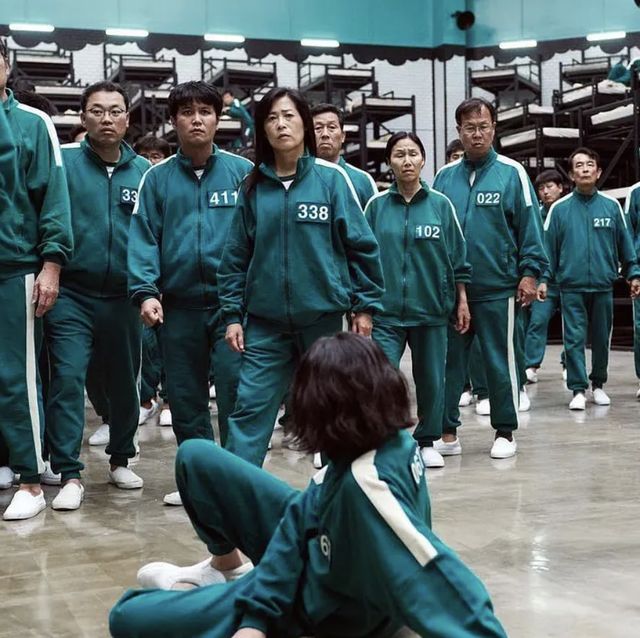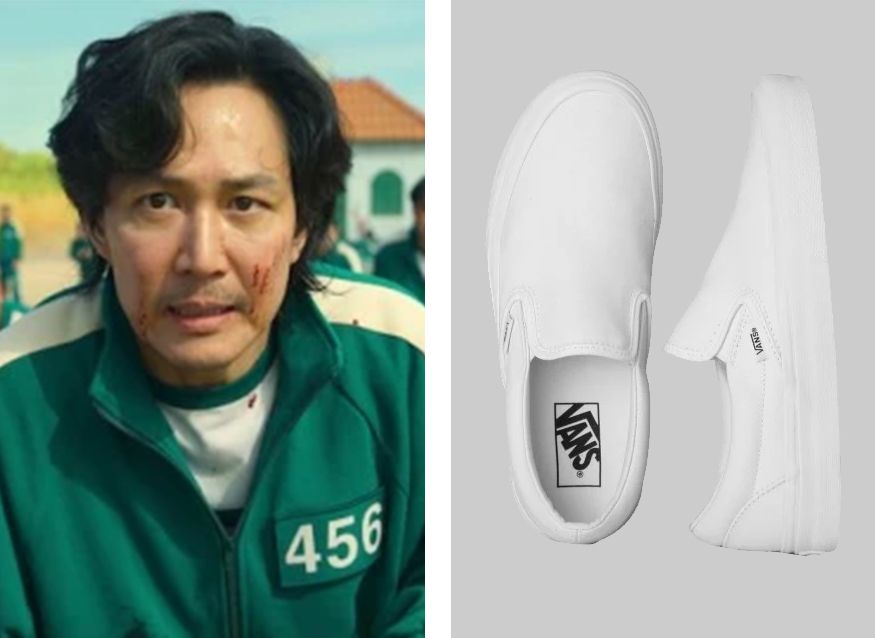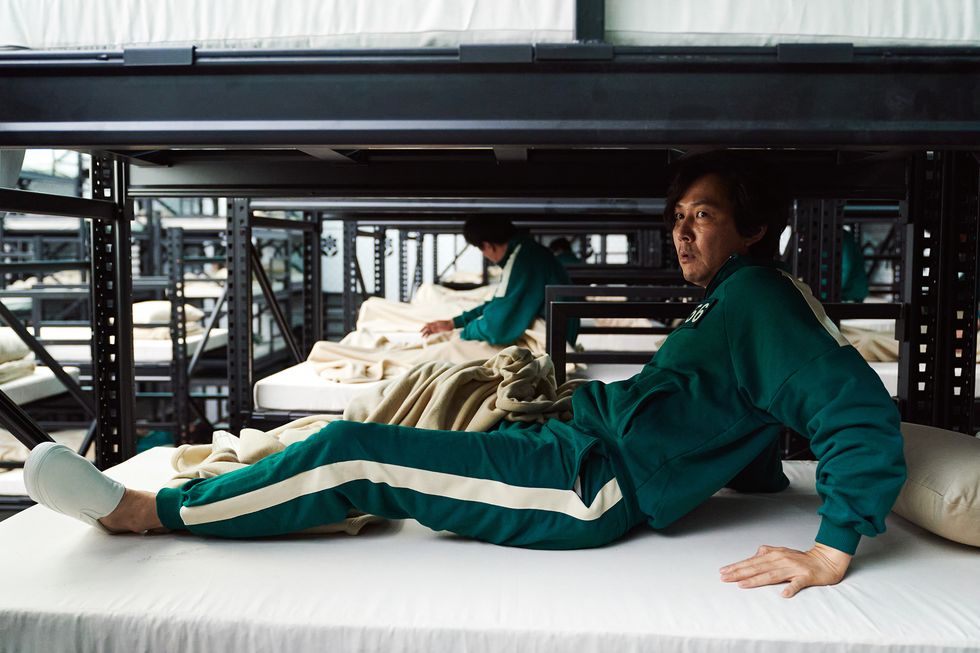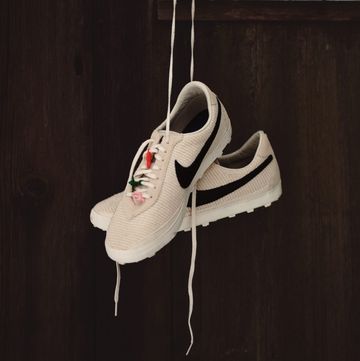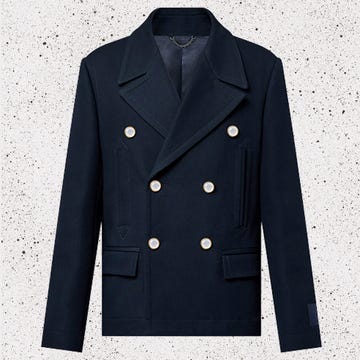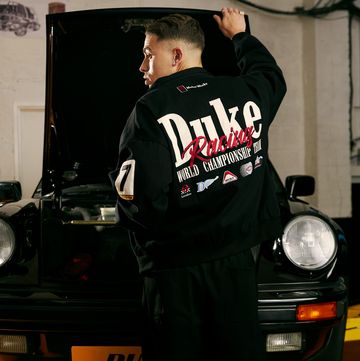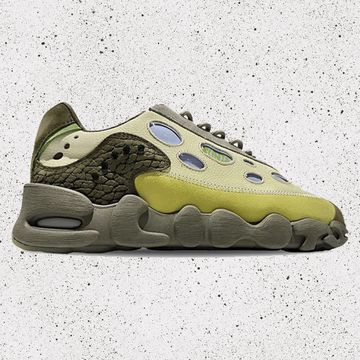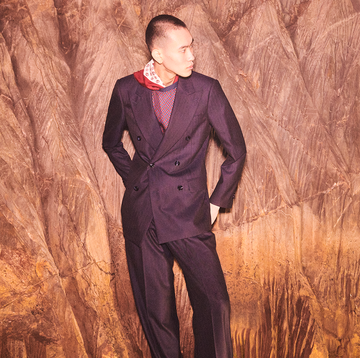As Squid Game hurtles towards its final and most hellish act, the final 16 players line-up in front of a fragile glass bridge. At each step is a twin set of glass panels: one solid, one tempered. They must correctly guess the safe option of the two, or face elimination. Which, in this macabre reimagining of playground games, means death. The players, understandably, are very nervous. They mop their brow. They murmur the staggering odds. They remove their shoes – and it is the first instance in which down-on-his-luck protagonist Seong Gi-hun (mesmerisingly played by Lee Jung-jae throughout) is without the standard issue fare that looks remarkably similar to Vans' classic slip-on trainer.
Since Netflix released the South Korean survival drama some weeks ago, Squid Game has become the latest pop cultural wacker plate. It has kicked up a smog of memes, conversations, debates and takes, many of which liken the late capitalist critique to a cross between Bong Joon-ho's Parasite and the bloodthirsty class massacre of 2000's Battle Royale. It is tipped to become Netflix's most streamed TV series of all time. So expansive it is that Squid Game's tentacles have even reached our wardrobes; according to stats released by footwear Sole Supplier, Vans' white slip-ons have seen a 7,800 per cent uptick in sales in recent days.
Of course: Halloween. Many viral moments, both good and mad, make for amusingly obvious costumes (Miley Cyrus's dreadful MTV performance with sentient casa marzu Robin Thicke in 2013; Trump and Hillary in 2016 before it stopped being funny; and, of course, Patrick Bateman for any man who has ever worked in finance). But a 7,800 per cent rise? There's no way all of those trainers are to be bought and sullied for one night only at the house party of a particularly brave friend. People are buying them because they like them.
Vans has always enjoyed an appeal that's inextricably tied to youth culture. Though founded in the California of 1966 with a vision to build deck shoes with thicker soles, the label found its niche as the skateboarding counter-culture label from the mid-Seventies onwards. Right place (Anaheim, a Californian town that embraced skateboarding from its inception), and right product (the Vans 95, the brand's debut lace-up canvas skate shoe which is still available today under the Era family, and is still considered as one of the best trainers for men). Fast forward several decades later, and Vans is still worn by teens. It is still worn by adults too, despite the fact that they've long left adolescence behind. And, though skateboarding has, quite rightly, been anointed a sport proper by recent Olympic committees, it is something still rooted in one's salad days – and it still manages to ensnare fully grown adults without giving cause for concern or embarrassment. Few menswear pieces stay with a man from Year 8 half-pipes to health and safety away days.
That list of kindergarten-to-grave list is swelling though. In recent years, menswear has turned away from coded tailoring and become increasingly casual. There's a youthfulness to it. 10 years ago, a professional man in his 30s would've been accused of all sorts of things for wearing a baseball cap. Now, it's standard issue. In fact, slap the badge of an ascendant brand on it, and they'll sell out. The same can be said for schoolboy shorts (Prada), and white gym socks (skate culture, again), and back-to-school backpacks (Fjällräven), and dinosaur T-shirts (Coach) and teddy bear sweatshirts (Polo Ralph Lauren). Even dungarees have launched a comeback (Dickies, Carhartt WIP, Beams Plus). There's something inherently juvenile about it, and inherently comforting.
Which is not levelled as a criticism. Style has unarguably flourished since breaking free from stuffy diktats. We have more choice and more freedom. Menswear is now largely divorced from a prescriptive charter with its roots in an outdated idea of masculinity. But it is happening, and it began way before the pandemic infantilised us, before we moved back in with our parents and groaned at mum's proposed menu. Perhaps, in a world that is more uncertain than ever, we dress how we want to feel; comfortable, and clothed in the stuff from a kinder, safer, surer era.
That Squid Game forces its participants into school uniform gym kit is telling. They are defenceless, and thus revert to the behaviours we associate with pre-adulthood; tantrums, tears, bullying, refusals – all emotions which are sparked by a series of deathly playground games. In this vivid Escherian nightmare, the runaway TV show uses clothing to show us who we all really are: overgrown kids, frightened of a future that is eclipsed by a looming question mark. You don't need to play a life-or-death game to feel that.
And it all comes down to a dive into darkness. The penultimate challenge is a game – indeed, Squid Game's only game – where skill, strength and intellect are of no value. It's just pure luck. And so Gi-hun removes the slip-ons, and leaps, barefoot. There is no safety net. There are no childhood trainers to swaddle him in a proverbial comfort blanket. In both the adult world, and that of Squid Game, there comes a point where the next stepping stone is into the unknown – and there are no guarantees that the ground will hold.
